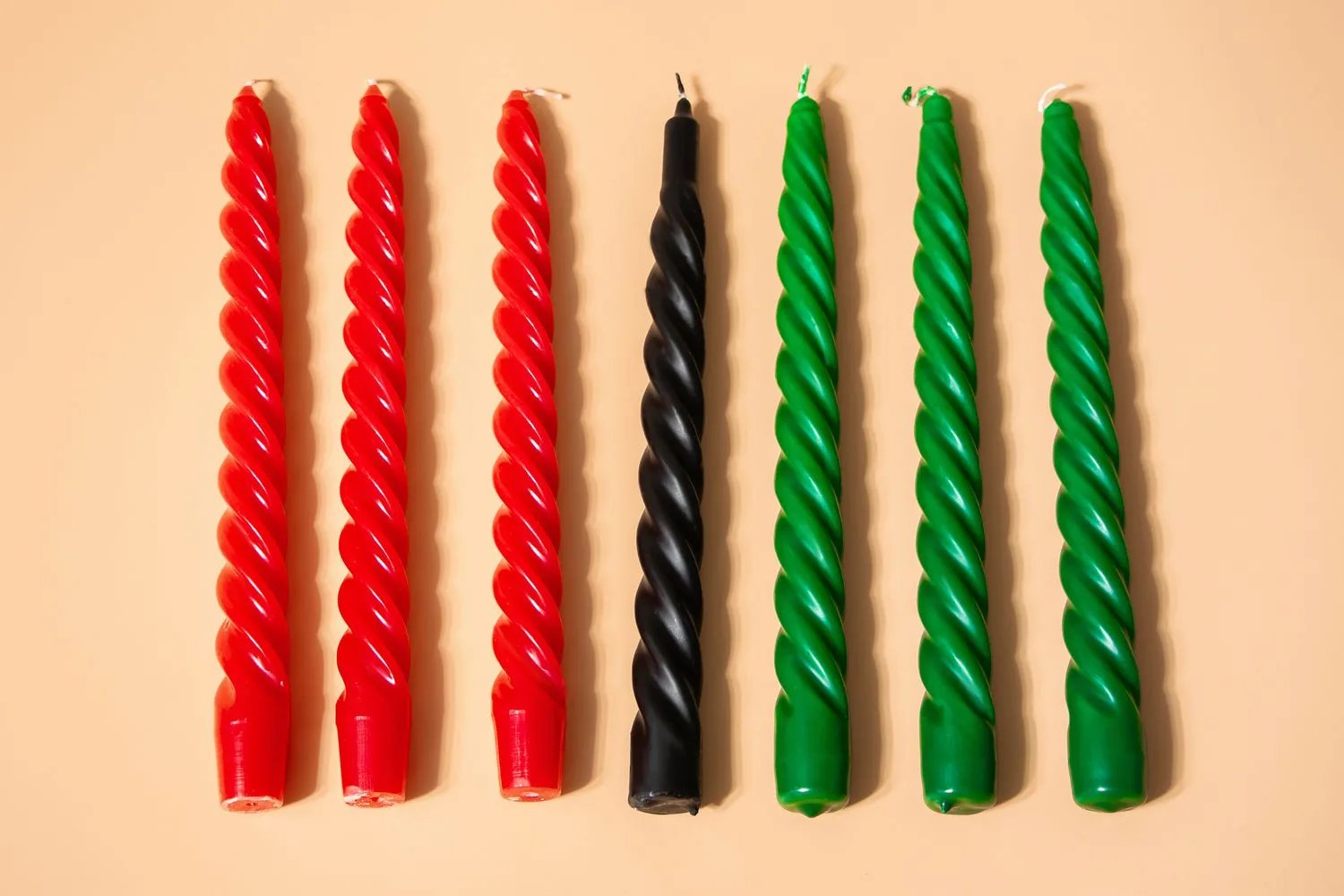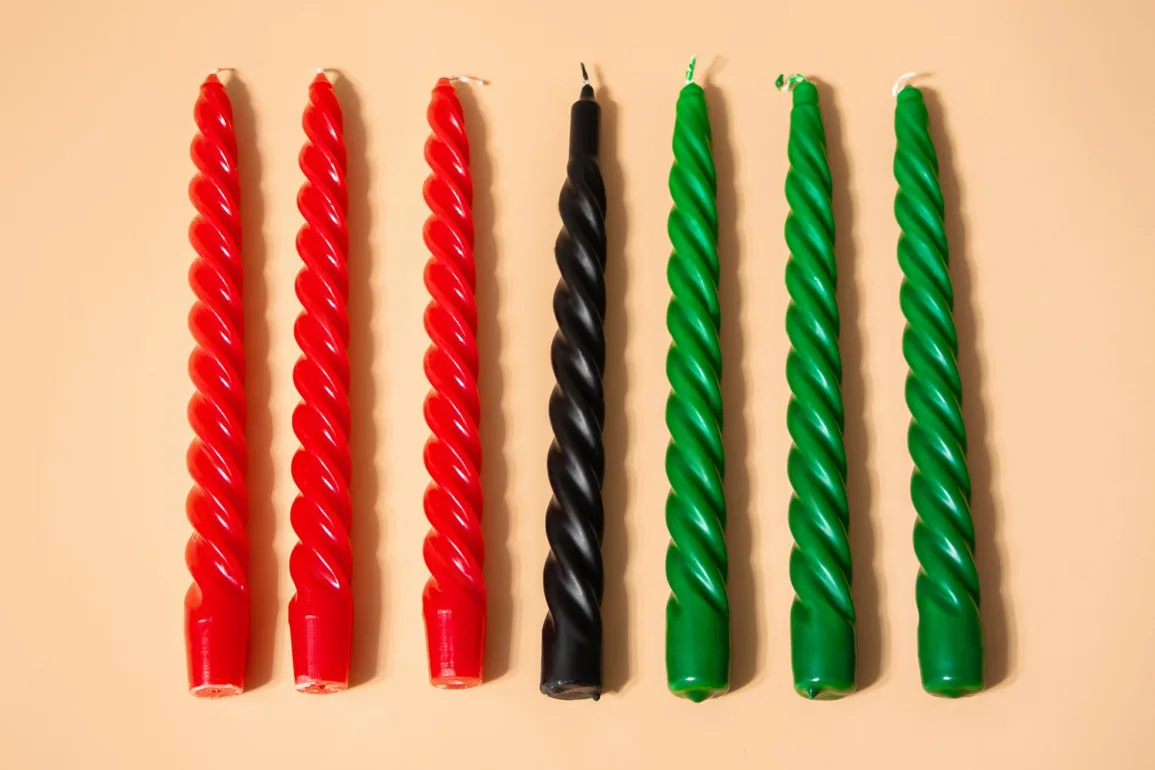
Kwanzaa is a seven-day, non-religious celebration of family, culture, and community. Each day honors a particular African-derived principle and the final day culminates in a feast (called Karamu) on New Year’s Day.
If you’ve never celebrated Kwanzaa before, there’s no time like the present to start. It was introduced in 1966 by Dr. Maulana ‘Ron’ Karenga, at the height of the Black Power movement. It was designed to acknowledge and respond to the racial and economic challenges faced by African Americans. After studying different beliefs and practices from Africa’s 54 countries, Karenga invented a week-long commemoration that blended educative and spiritual elements he thought would be most useful to people of African descent living outside of the continent. Borrowing from Hannukah, among other mainstream religious holidays, Karenga envisioned a harvest festival that closed the year with gratitude before ushering in hope for a brighter future.
Although it started with humble roots in California, today Kwanzaa is celebrated throughout the United States. It’s focus on African values is not exclusionary. This celebration is open to people of all identities and faiths. No longer seen as a rival to Christmas, Kwanzaa (celebrated from December 26 to January 1) is commonly commemorated concurrently with major religious holidays that fall at the end of the year. Keep reading for more on the history, meaning, and celebrations of Kwanzaa.
What does “Kwanzaa” mean?
Kwanzaa derives its name from the Swahili phrase “matunda ya kwanza,” meaning “first fruits.” Although Karenga drew heavily from East African words and ideas, Kwanzaa (also spelled Kwanza or Cuanza) is also the name of a river and the currency found in Angola, in central, West Africa. The mixing of ideas, words, and practices found throughout the continent has made for some rejection of the celebration as being inauthentic. However, it’s important to remember that the holiday is meant to symbolize hope and pride, not to replicate an existing holiday. Instead, Kwanzaa borrows from existing traditions to make something altogether new.
In alignment with the winter solstice, Kwanzaa emphasizes the harvest season with symbols of health, community, and prosperity. Each day is counted down on a menorah-like candelabra. Throughout the week, celebrants learn and communicate in Swahili phrases to stay connected to gratitude. Gifts exchanged during the week are handmade or reused, in addition to being of utilitarian value. Pushing against consumerism during the end of year shopping season, Kwanzaa is often used as a rooting practice meant to bring families and friends together—regardless of their budget or background.
Who celebrates Kwanzaa?
Kwanzaa is an American tradition. It did not exist in Africa or the African Diaspora before it was invented in 1966. It is widely celebrated by African-Americans across the United States, but principally in cities with large Black populations, like New York City, Oakland, Atlanta, Chicago, Philadelphia, and more. Although initially rooted in African-American communities, Kwanzaa’s inclusive principles have spread similar celebrations worldwide, especially in the Caribbean, Brazil, Canada, and France, where there are large and diverse Black communities. Kwanzaa promotes inclusivity and is open to anyone who resonates with the holiday’s principles of unity, self-love, and community service.
When is Kwanzaa celebrated?
Observed annually from December 26th to January 1st, Kwanzaa aligns with the end of the year. It offers a unique opportunity for daily retrospection, celebration, and hopeful goal setting for the coming year.
What are the Seven Principles of Kwanzaa and how are they celebrated?
The Nguzo Saba (or seven guiding principles) are celebrated one-by-one on each day. To acknowledge the day’s principle, observers gather to light a designated candle on the kinara, a decorative, seven-branch candleholder. In observance, the group may enjoy songs, dancing, African drums, story-telling, poetry reading, and shared meals to represent that principle.
- Umoja (Unity): Emphasizes unity within families, communities, and the African diaspora. Observe it by lighting the first candle, representing unity, on the Kinara.
- Kujichagulia (Self-Determination): Encourages individuals to shape their own destinies. Groups engage in activities that encourage self-reflection and personal goal-setting. Usually, kids must research and share short narratives about public figures from Black history—from Martin Luther King Jr. to Rihanna—whose achievements were attributed to persistence.
- Ujima (Collective Work and Responsibility): Stresses collaboration and shared responsibility for community development. Expect to participate in collective projects or volunteer work to improve the local community.
- Ujamaa (Cooperative Economics): Promotes financial literacy and entrepreneurship by highlighting community-based businesses or social enterprises that provide collective prosperity. Families try to buy from or support local Black-owned businesses. Conversations revolve around economic empowerment, responsible spending, and the power of investing. Elders pass down financial advice and money lessons to younger generations.
- Nia (Purpose): Encourages setting community-oriented goals and working toward them, collectively. Groups discuss problems they face and set goals to overcome them for the betterment of the community. A break for an individualistic mindset, this principle encourages deriving purpose from helping others and seeing oneself as an integral part of a larger society that deeply relies on their talents.
- Kuumba (Creativity): Celebrates creativity and fosters continuous improvement. This is a fun day to engage in creative activities, such as art-, music-, or craft-making. Expect to incorporate African words and West African Adinkra symbols. Handmade gifts are exchanged, emphasizing the value of personal creativity in each.
- Imani (Faith): Encourages belief in oneself, community, and positive change. The final candle on the Kinara closes the celebration with a symbol of faith. Families engage in discussions or activities that encourage optimism, planning for, and belief in a positive future. This is also the most festive day, celebrated with a large, potluck-style meal (called Karamu) open to all.
Which expressions and symbols are used during Kwanzaa?
The authenticity of Kwanzaa can be embraced by expressing generosity through meaningful deeds and thoughtful tokens of appreciation rather than expensive, material gifts. Each of the seven days of Kwanzaa is dedicated to a specific principle that inspires people to exemplify their best selves, pay homage to their ancestors, and commit to building a positive legacy for future generations. Kwanzaa is a beautiful way to close off the old year and to embark on the new with renewed optimism and cherished family and friends.
What are the most important words to know during Kwanzaa?
- Bendera: the Kwanzaa flag; the colors are black (the people), red (their struggles), and green (their hope) to represent freedom and unity, as envisioned by Marcus Garvey
- Kikombe Cha Umoja: unity cup; symbolizes togetherness
- Kinara: candleholder; symbolizes the bond or connection that the African diaspora feels towards Africa
- Mazao: crops; symbolizes abundant harvest and collective labor
- Mishumaa Saba: seven candles; three red, one black, and three green candles represent the Nguzo Saba (the principles or values to live by)
- Mkeka: mat; symbolizes the foundations, traditions, and heritage of a people
- Muhindi: corn; symbolizes the future or the children
- Zawadi: gifts; symbolizes the sacrifices, commitment, and bonds of parents and their children


